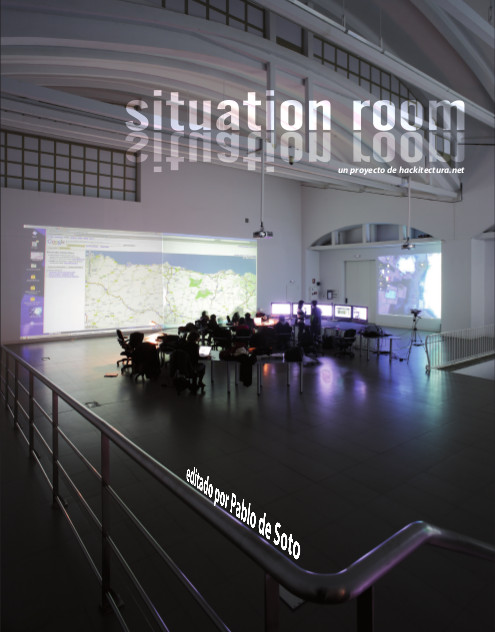Stephen Wright (ed.): Dataesthetics: How to Do Things with Data (2006) [English/Croatian]
Filed under book | Tags: · art, biopolitics, cartography, data visualisation, database

Data has become the most pervasive and intangibly invasive feature of contemporary life; of life become data. Life systems have been the object of sustained data gathering since the time of the Enlightement, and cartography, flow charts, graphs and statistical databases have played a preponderant role in the shift from a society based on discipline to contemporary regimes of biopolitical control.
Art production long sought to protect the relatively autonomous sphere it had eked out for itself from any incursion by the potentially deadening logic of knowledge production and data gathering and display. In the face of the sheer glut and facile allure of purpose-driven information and rationality, art`s self-assigned role was to affirm its radical uselessness.
Yet as knowledge use has become inseparable from the exercise of power, many practitioners have chosen to use the strength of data to challenge and potentially subvert data-power. Critical cartography, tactical magic, database use and research have become integral components of artistic competence, which refuses to leave social critique to the social sciences.
With contributions by Bureau d’Etudes, Media Farzin, Rene Gabri, Aaron Gach, Brian Holmes, Naeem Mohaiemen / Visible Collective, Trevor Paglen, Nataša Petrešin, Martha Rosler, Gregory Sholette, McKenzie Wark, Stephen Wright.
Publisher Arkzin, Zagreb; with Revolver, Frankfurt; and WHW, Zagreb, 2006
Creative Commons Attribution-Share Alike 2.5 License
ISBN 9536542854, 3865883699
184 pages
Situation Room: Designing a Prototype of a Citizen Situation Room (2010) [English/Spanish]
Filed under book | Tags: · architecture, capitalism, cartography, cybernetics, military

The term Situation Room is normally used to designate a secret place used in times of crisis to assess and monitor data for decision making purposes. Its origins can be traced back to World War II with the invention of computers, digitalization, and the collaboration of architects and the military. These rooms are equipped with monitors and data boards used to control everything from flows crossing the strait of Gibraltar to nuclear fission processes in Nuclear Power plants and the life support mechanisms on board the International Space Station.
“Rather than being afraid of control, and technologies in general, we prefer to think in terms of social appropriation and implementation with research and creativity; we even think that, as Cybersyn shows, the source of technological creativity actually lies in social cooperation, and that it is only later captured by the military or capitalism.” -Hackitectura
Idea: José Pérez de Lama y Pablo de Soto
Editors Pablo de Soto & Hackitectura
Publisher dpr-barcelona, June 2010
Creative Commons Attribution-NonCommercial-ShareAlike 3.0 License
ISBN 9788461415045
112 pages
Rick Dolphijn, Iris van der Tuin: New Materialism: Interviews & Cartographies (2012–) [EN, TR]
Filed under book | Tags: · cartography, ethics, materialism, metaphysics, philosophy, politics, transversality

“This book is the first monograph on the theme of “new materialism,” an emerging trend in 21st century thought that has already left its mark in such fields as philosophy, cultural theory, feminism, science studies, and the arts. The first part of the book contains elaborate interviews with some of the most prominent new materialist scholars of today: Rosi Braidotti, Manuel DeLanda, Karen Barad, and Quentin Meillassoux. The second part situates the new materialist tradition in contemporary thought by singling out its transversal methodology, its position on sexual differing, and by developing the ethical and political consequences of new materialism.”
Publisher Open Humanities Press, 2012
New Metaphysics series
Creative Commons BY-SA 3.0 license
ISBN 1607852810, 9781607852810
195 pages
Announcement from the series editor (Graham Harman)
HTML, HTML
PDF, PDF (updated on 2016-7-19)
Yeni Materyalizm: Görüşmeler ve Kartografiler (Turkish, trans. Esra Erdoğan, 2019, added on 2020-4-18)

